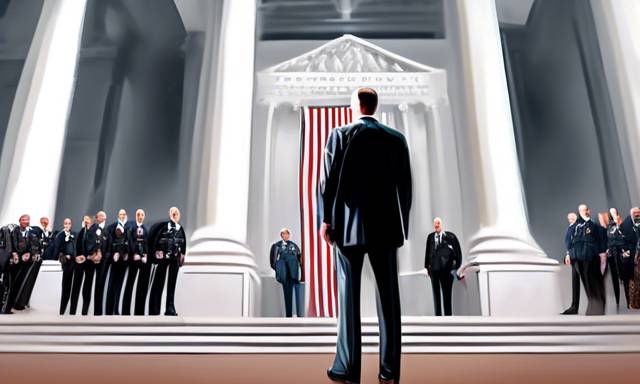Secret Service Failures Highlighted in Senate Report on Trump Rally Shooting 📉
A recent bipartisan Senate investigation has unveiled significant lapses within the United States Secret Service during a July rally for former President Donald Trump. The findings denote that the failures were “foreseeable, preventable, and directly tied to the events that culminated in the assassination attempt on that day.” This year has seen intense scrutiny of security protocols in light of this event.
Overview of the Investigation’s Findings 🔍
The interim report emanating from the Senate Homeland Security and Governmental Affairs Committee echoed similar conclusions drawn from an internal inquiry by the Secret Service, as well as an ongoing investigation by the House. The report outlined numerous shortcomings across various aspects, including:
- Planning and strategic execution
- Communication avenues
- Security measures in place
- Resource allocation
According to Michigan Senator Gary Peters, the chair of the Homeland Security panel, “The consequences of those failures were dire.” The examination brings to light the serious mismanagement leading up to the shooting incident.
Lapses in Communication and Coordination 📢
The report pinpointed a troubling absence of a clear command structure among the Secret Service and associated security forces. Investigators revealed that no systematic plan had been established for securing the area around the venue where the shooter targeted the crowd. Key issues noted included:
- Miscommunication due to the use of multiple radio channels
- An inexperienced drone operator facing technical difficulties without adequate support
Senator Peters characterized the communication chain among security officials as akin to a “multi-step game of telephone,” which hampered effective coordination.
Timing of Alerts and Response Failures ⏳
The investigation indicated that Secret Service received word about an armed individual on the venue’s roof just two minutes before the shooter, identified as Thomas Matthew Crooks, began firing. He unleashed eight shots directed towards Trump, who was less than 150 yards from the shooter, resulting in injuries to the former president.
Further compounding the situation, local law enforcement had alerted authorities of the armed suspect approximately 22 seconds prior to the first gunshot, but this urgent information failed to reach critical Secret Service personnel.
Despite the evident chaos, even a counter-sniper positioned nearby failed to notify personnel to evacuate Trump from the stage promptly.
Follow-Up Actions and Agency Responses ✍️
In the wake of the Senate report, U.S. Secret Service spokesperson Anthony Guglielmi stated that the agency had already begun implementing steps to address some of the committee’s recommendations. He emphasized their commitment to collaborate with congressional oversight while ensuring enhanced security for Trump, who currently seeks reelection in 2024.
Guglielmi mentioned that the agency aims to explore long-term strategies to bolster communication channels and coordination efforts across federal, state, and local entities during protective events.
Accountability and Recommendations 🤝
The ongoing investigations continue to unveil alarming details about the consistent breakdowns in protective protocols established for the former president. Lawmakers advocate for tighter measures to ensure such failures do not recur, emphasizing that the issues stemmed from multiple missteps by the Secret Service.
Senators have urged that responsibilities and roles within the agency need clearer definitions to avert future mishaps. Suggestions include:
- Assigning a single lead individual for security planning at events
- Improving communication and coordination with local law enforcement
Reports indicate that during preliminary meetings before the rally, local authorities expressed their concerns regarding insufficient manpower for securing the venue. However, the Secret Service agents involved provided conflicting accounts about security responsibilities after the incident.
Future Directions and Funding 🏦
As discussions unfold regarding the agency’s funding and operational enhancements, there is a divide in Congress regarding whether financial support should be increased without a clear operational overhaul first. An upcoming spending bill aims to allocate more funds to the Secret Service, although some lawmakers emphasize the pressing need for management reform before increasing budgets.
The unfolding situation serves as a critical examination of the Secret Service’s protocols and preparedness in safeguarding high-profile individuals. Identifying these failures is paramount to ensuring future security and public safety as the agency navigates the complex landscape of protective services.
For more information, check these sources:
Source,
Source,
Source.





 By
By
 By
By
 By
By

